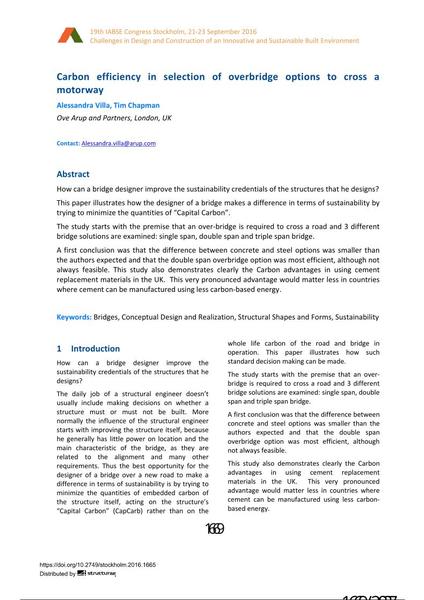Carbon efficiency in selection of overbridge options to cross a motorway

|
|
|||||||||||
Bibliographic Details
| Author(s): |
Alessandra Villa
(Ove Arup and Partners, London, UK)
Tim Chapman (Ove Arup and Partners, London, UK) |
||||
|---|---|---|---|---|---|
| Medium: | conference paper | ||||
| Language(s): | English | ||||
| Conference: | IABSE Congress: Challenges in Design and Construction of an Innovative and Sustainable Built Environment, Stockholm, Sweden, 21-23 September 2016 | ||||
| Published in: | IABSE Congress Stockholm, 2016 | ||||
|
|||||
| Page(s): | 1669-1676 | ||||
| Total no. of pages: | 8 | ||||
| Year: | 2016 | ||||
| DOI: | 10.2749/stockholm.2016.1665 | ||||
| Abstract: |
How can a bridge designer improve the sustainability credentials of the structures that he designs? This paper illustrates how the designer of a bridge makes a difference in terms of sustainability by trying to minimize the quantities of “Capital Carbon”. The study starts with the premise that an over-bridge is required to cross a road and 3 different bridge solutions are examined: single span, double span and triple span bridge. A first conclusion was that the difference between concrete and steel options was smaller than the authors expected and that the double span overbridge option was most efficient, although not always feasible. This study also demonstrates clearly the Carbon advantages in using cement replacement materials in the UK. This very pronounced advantage would matter less in countries where cement can be manufactured using less carbon-based energy. |
||||
| Keywords: |
bridges sustainability Conceptual Design and Realization Structural Shapes and Forms
|
||||
